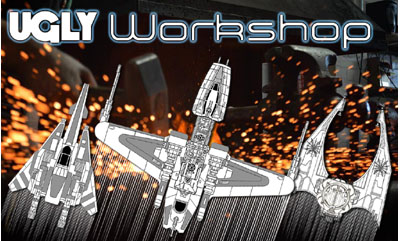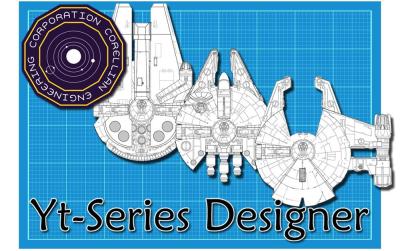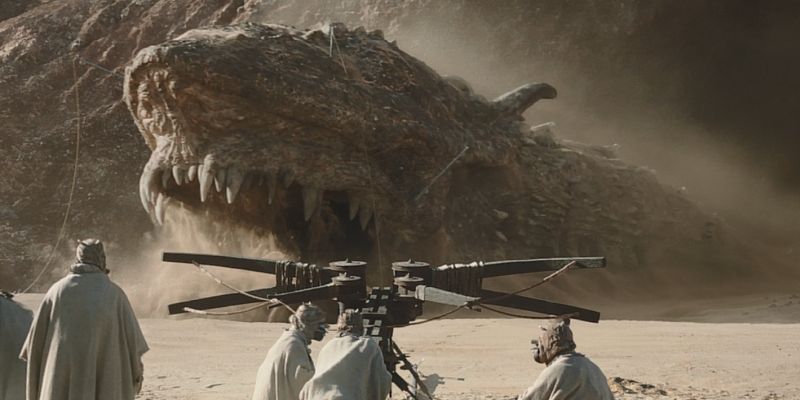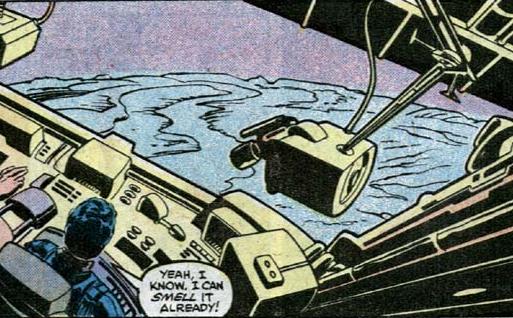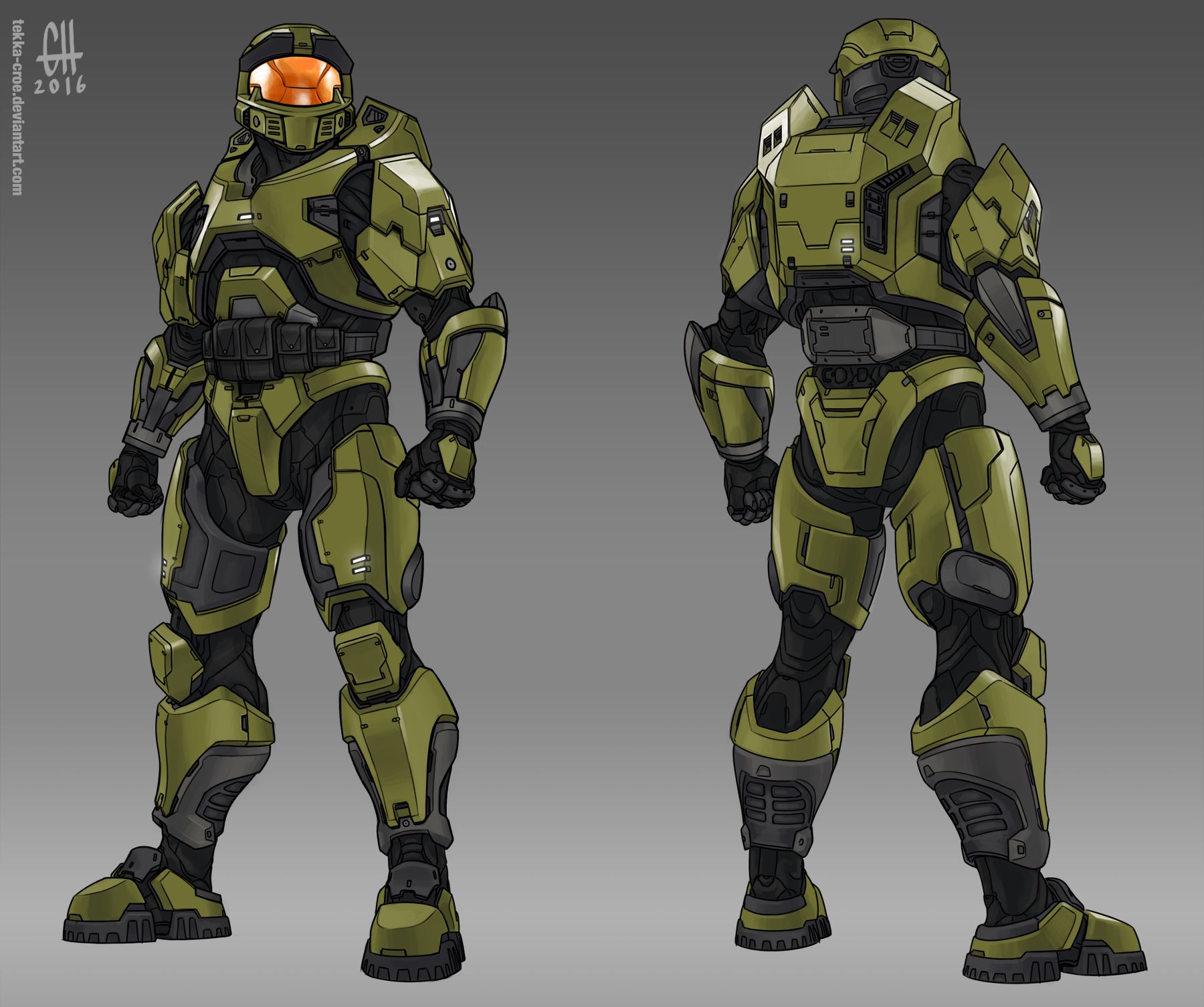 MJOLNIR ARMOR MK V
“This... is everything I had always dreamed it could be.”
— Doctor Halsey
The Mjolnir Powered Assault Armor/Mark V was the fifth of seven versions of the Mjolnir Powered Assault Armor. The suit was issued to the members of Noble Team on November 24, 2551 and to the remaining SPARTAN-II Commandos on August 29, 2552. and was in service until October, 2552, when it was replaced by the Mark VI.
Model: UNSC Materials group Mjolnir Powered Assault Armor Mk V
Type: Powered combat armor suit
Scale: Character
Skill: Powersuit Operations: Mjolnir Mk V
Cost: Not Available For Sale
Availability: 4, X
Difficulty: Heroic Powersuit Operations (Moderate for Spartan-II)
GAME NOTES:
Summary:
-Heroic Powersuit Operations skill roll to use (Moderate for Spartan-II)
-Battle Suit: Strength +2D VS Physical/Energy (Outer Shell+Techsuit).
--Modular Outer Shell: +1D VS Physical/Energy.
--Techsuit: +1D VS Physical/Energy.
---Strength +2D for pushing/lifting skill rolls.
-Energy Shields: +3D (see Energy Shields Optional Rule below).
--2 rounds to begin recharge cycle.
--1 round per 1D of shields to recharge.
--5 rounds total to recharge.
--If hit during recharge cycle, recharge stops and must cycle again (2 rounds to begin recharge).
-Reactive Metal Liquid Crystal Layer:
--+1D to Dexterity skills and Strength Damage.
--x2 Weight Lifting Capacity
--Move +8 meters.
--+2D Jumping Skill.
-Hydrostatic Gel Layer: +2D VS high velocity impacts, Difficulty -2 levels (-10).
-Pressure Seal/Sealed Environment:
--+2D VS Extreme Environments (heat/cold/underwater/space/radiation).
---90min air supply.
---Air Filters.
---Can EVA/spacewalk.
---Food/Water Supply: 2 week (x2 for a Spartan-II)
-Helmet:
--AI Chip Unit Slot:
---Has extra "character" with the Spartan in the suit.
---Multi-Task: 1 extra action using AI's skills.
---Enhancement: +1 pip to Spartan skills for every 1D AI has of same skill
--+1D Perception to perceive surrounding environment.
--Flashbang Protection: Perception +2D VS bright light and visual stun effects.
--External Audio Speakers (mute option for silent communication).
--HUL: Visual/audio recorder.
--Visual Light Dimming/Amplification.
--Thermal Imaging.
--Macrobinocular Function (visual zoom 1,000 meters).
--HUD:
---Identify Friend or Foe (IFF) locator (shows enemies/allies, tied to Heat/Motion Sensor).
---Health monitor.
---Armor Data.
---Data Sharing with other UNSC/allied assets.
---Map/Geographical Data.
----Can set Waypoints.
---Targeting Reticule (Weapons equipped with SmartLink).
---Ammo counter (Weapons equipped with SmartLink).
---Weapon/Equipment Selection (Items equipped with SmartLink).
---Heat/Motion Tracker: 25m range, horizontal and vertical.
--Comlink: Audio/visual feed, imaging and video gear, data exchange, 100 km range.
---Access to TACCOM.
--Solar-powered lighting.
-Low-Impulse Propulsion Jets: 8 meter Move in space.
-Magnetic Clamps: holds gear on legs/waist/back, attach to metal surfaces with hands/feet.
-Biofoam Injector Ports: Inject biofoam when injured, maintains Sealed-Enviornment.
--(Biofoam works like Star Wars D6 medpac or better).
-Difficult To Transport:
--Weight, 453.6kg/1,000lbs.
--30min-1hr to put on or remove, 5-10min with a Brokkr Armor Mechanism.
--Automataed armatures reduces time to 5-10 minutes.
-Microfusion Reactor Power Source.
--Power Supply Control Unit: Powersuit Operations skill roll to trade pips between powered systems to enhance others, +1/-1 per Diffiulty rolled (Ex: reduce physical bunises -1D to increase shields +1D).
--Fail-Safe Detonation System: Moderate Powersuit Operations skill roll.
---Burns everything within a ten-meter radius.
----Blast Radius: 0-3/5/7/10
----Damage: 8D/7D/6D/5D Energy Damage.
----8D Radiation Poisoning/Damage.
---Then produces a large blast (30-50 meters).
----Blast Radius: 0-5/10/15/20/30/50.
----Damage: 15D/14D/13D/12D/10D/8D Energy Damage.
----GMs can feel free to make this bigger and stronger.
-Optional Gear:
--Armor Lockup: +2D Shields for 2 rounds, cannot move while active, 6 round recharge cycle.
--Active Camouflage: +2D Sneak/Hide skill rolls for 10 rounds.
--Shield Overcharge: +3D to shields, fades at -1 pip per round (Covenant device).
*NOTE! (Energy Shields Optional Rule): Each +1D of shields is an "extra wound" that needs to be depleted from the target, hence the term "stripping shields". When the attacker rolls damage against a shielded target, they roll their dice and compare the result to the Star Wars D6 Damage Chart like normal. But the Damage Chart result is reduced by one level per +1D of shields at the expense of that 1D (The Damage is effectively negated -5 per +1D of shields). The character must then rely on their Strength and armor dice to resist damage while the shields will need time to recharge, if they can. Unless otherwise stated, the shields are depleted according to what Damage was negated and take two rounds before they begin recharging, then one round per 1D of shields to recharge to full. So +3D of shields would take a total of five rounds to recharge. If not using this optional rule, reduce shields -1D (+2D total).
-Force-Multiplying Circuits: Heroic Powersuit Operations skill roll per round to use safely when moving, otherwise wearer must roll VS 5D Damage per round until they can either stop moving (Heroic Dexterity roll) or die. Spartan-IIs have this Difficulty reduced to Moderate. Located throughout the armor, these systems boost the force applied by the user. They make hand-to-hand combat easier, but also make the armor difficult to adjust to; a slight motion can be translated into a potentially harmful one if not conducted correctly. For this reason it is only possible for Spartans to use this armor, as their strengthened bodies are able to withstand the increased power and speed of movement, which, in un-augmented human bodies, results in broken bones or death due to spasms caused by the pain of broken bones.
-Titanium Alloy Outer Shell: Strength +1D VS Physical/Energy (combines with Techsuit bonus for Strength +2D VS Physical/Energy). The outer shell of the Mjolnir Armor is comprised of a fairly thick titanium alloy. This plating covers the chest, arms, hip, legs, calf's, feet and hands. This alloy is very resilient, can take significant punishment, and is nearly impervious to small arms fire. While enough shots from armor piercing rounds will breach the outer shell, the suit can take a few glancing blows from them without compromising the armor. The outer shell of the Mjolnir suit is covered with a refractive coating to help disperse the heat experienced from Covenant energy weapons. However one or two direct hits from any Plasma weapon will compromise the armor plating.
-Titanium Nanocomposite Bodysuit (Techsuit): Strength +1D VS Physical/Energy, Strength +2D for pushing/lifting skill rolls. Sandwiched between the external armor and the internal padding is a thick black armored bodysuit. This suit has numerous functions, small but vital to the safety and survival of the wearer. The bodysuit is made of a titanium-based material, making it very strong and yet very flexible. It also serves as another layer of protection against ballistic attacks and is coated with a heat resistant material to disperse heat from plasma weapons. Stat-wise, this works with the Titanium Alloy Outer Shell to combine armor bonuses to Strength to resist Damage, but the Techsuit is the basis for all Mjolnir armors, and the outer shell is added on top of this. Different models of outer shell grant different bonuses and some vaiants off difeatures or abilities all together
-Reactive Metal Liquid Crystal Layer (RMLC Layer): +1D to Dexterity and Strength, Move +8m, +2D Jumping skill. Dexterity bonus applies to hand-eye coordination and agility related skills like ranged and melee combat as well as Dodge and Parry skill rolls. Strength bonus improves damage for brawling, melee, or hand-to-hand combat in general. Liquid crystal forms the inner structure of the suit. This reactive metal increases the strength, reaction time, mobility, speed, and all around physical performance of the SPARTAN-II. This layer of crystal, knitted together at a molecular level and fitted in between the outer plates and the inner padding, accounts for over eighty percent of the Mjolnir Armors cost of construction and materials. It also doubles (x2) the Weight Lifting Capacity of the user (if using the list weight for the Lifting skill shown in Star Wars D6 rules, double the weight listed for using the skill).
-Helmet And HUD: The Mjolnir Helmet is one of the most vital aspects to the Mjolnir system. It is made of Titanium and contains key features like a Heads-up display (HUD) that links to the brain and hands, and can identify equipment and display information about it when it is picked up by the wearer. Another feature is the direct neural interface system which connects to a SPARTAN-IIs neural implants. Two core processor chips are implanted into the subjects skull in the rear of the head. This is essentially comparable to an on board computer using parts of the human brain for processing - when the connector at the rear of the subjects head and receptors in the brain link to the helmets on board sensors it creates the neural link needed to move the Mjolnir suit. The helmet also contains other equipment to protect and aid the user in hostile conditions. This includes: filters to remove toxins from the atmosphere, a supply to provide air to the wearer during EVA (90 minutes), thermal and motion sensors, communications, solar-powered lighting, and imaging and video gear.
+1D to Perception skills used for perceiving the surrounding environment, but does not improve interaction, stealth, or other such skills. The helmet has a Heads Up Display (HUD) that shows information to the wearer, such as ammo count for weapons equipped with a SmartLink, location of enemies/targets, allies, and various objects such as moving vehicles in the suit's radar motion tracker system, health monitor, various other armor-related technical data, audio speakers for the commlink as well as showing a video feed of the person being communicated with, availability of other equipment if attached to the armor, and the ability to close off external communication if the wearer wants to have a private communication with someone else via the commlink (Spartan IIs were known to have private conversations this way when non-Spartans were standing right near them, though Doctor Halsey their creator learned to know them so well that she could often discern what their conversations were about due to their body language and mannerisms, and could even identify each Spartan II this way as they all tended to look the same when wearing their armor). The helmet of the visor also helps protect against flashbang effects (Perception +2D to resist) and has light amplification and dimming effects to allow better sight in changing environments where normal human sight may be limited. It also has a zoom function to allow sight and target spotting and engagement at greater distances (normal rules for macrobinoculars in SWD6). The helmet can also feed the wearer various tactical data like displaying maps of a given area (if map data was ever made available via recon specialists, drones, satellites, or orbiting ships or other facilities), and set waypoints at map locations for various mission purposes. These waypoints and other data can be shared with other UNSC personal equipped with helmets that have HUDs or other equipment linked to the UNSC's BattleNet (Bee-Net), or other properly equipped personnel or facilities such as bases, ships, orbiting stations, etc.
GM discretion to allow the VISR function shown in Halo 3: O.D.S.T. and Halo Infinite. VISR could explain many of the functions listed in the helmet above, but it also had other uses, such as helping spot useful weapons and equipment nearby within visual range (+1D Search skill rolls for this purpose) and identifying UNSC assets as well as other non-UNSC assets marked by the wearer, mission support personnel in communication with the wearer, or an onboard A.I., as well as set waypoints for objectives. VISR was not shown in Mjolnir armor until Halo Infinite, and could even be a sort of plot device.
-Motion Tracker: The MJOLNIR Mark V includes a motion tracker with a radius of 25 meters. This motion tracker also takes into account vertical positioning. Allies, enemies, and vehicles will appear as properly colored triangles when they are a considerable height above, and appear as faded-out dots when they are a considerable height below. The radius of the motion tracker in the MJOLNIR Mark V's final iteration has been reduced by 10 meters, at only 15 meters.
-Pressure Seal/Sealed Environment: The armor and helmet has a sealed environment for protection against temperature extremes and a contained air supply of ninety minutes (1 1/2 hours). This allows the wearer to survive the vacuum of space for a time, as well as extreme heat/cold and underwater environments (+4D VS these if needed). The suit also has various thrusters on it that enable it to perform a proper spacewalk and control their movements in space so they do not drift aimlessly and are lost to deep space. However, these are functional, but not as good as they could be, and Spartans that are knocked away from safety hard and fast enough may still be lost to deep space, especially if a firefight is going on. A Mjolnir variant called EVA is better suited for spacewalks and is more capable of preventing this from happening. The helmet has air filtration systems for taking in fresh air when available, as well as filtering out poisonous substances from the atmosphere. The Pressure Seal is a vital component to the Mjolnir system, it keeps the system airtight, underwater or in space. The seal is very strong but will only break under extreme pressure, such as in a high velocity impact or when the Hydrostatic Gel has been over pressurized.
The suit can also carry supplies of condensed food and water (2 week supply)in it for the wearer to stay operational in the field for extended periods of time. Spartan-IIs may not need to eat/drink as often as normal humans and can stretch these supplies out longer (x2).
-Low-Impulse Propulsion Jets: 8m Move in space. Located at the back of the suit beneath the fusion reactor, this component provides the ability to propel the MJOLNIR user over short distances and maneuver in zero-gravity environment.
-Hydrostatic Gel Layer: Underneath the armored bodysuit is a gel-filled layer, this gel layer regulates the temperature of the suit and can change its density to conform to the wearer's shape - the temperature inside the suit is controlled by the moisture absorbing cloth suit underneath the hydrostatic layer. The hydrostatic gel layer can also be pressurized to various levels to potentially save the wearers life should the wearer be subjected to high G forces or a high velocity impact; however, over pressurizing this layer can cause nitrogen embolisms. This grants +2D in such situations, as well as reducing the Difficulty Level of such instances by two levels (surviving a fall off a mountain that requires a Strength+armor+Impact Gel roll of Heroic Difficulty instead only requires a roll of Difficult). Combining this feature with the energy shields that would be introduced in later Mjolnir armor variants is how Spartans can survive being dropped from low orbit and impacting on the surface of a planet (though the Difficulty for this also depends on if they are hitting soft dirt or rock, concrete or other "hard" structures).
-Magnetic Weapon Holder Strips: Available on the Mk IV, Mk V, and Mk VI, the magnetic strips are very small yet powerful magnets placed on the legs, waist, and back of the suit and is used to hold any equipment with a magnetic property. The suit also contains a magnet system on the boots of the Mjolnir suit that allow its wearer to stay attached to a metal surface in Zero G environments and can be toggled on or off by the wearer. These clamps are also present on the hands and feet and allow the wearer to walk or crawl on a metal surface in the vacuum of space, such as the outer hull of UNSC and Covenant starships. The clamps may only be part of the Outer Shell and the Techsuit may not have them built in.
-Biofoam Injector Port: The biofoam injectors on the Mark IV are ports where a direct supply of biofoam or other medicines, must be administered from a standard military first aid kit when the wearer is injured, as the suit does not hold or generate its own supply inside the suit.
-Difficult To Transport: Suits of Mjolnir armor are not something you can simply take off, fold up, and put away in a suitcase or closet. They require a complex framework of armatures and equipment to properly put on and to remove again. For this reason, the suit is built to be as comfortable as possible for a Spartan-II so it can be worn for days, weeks, months, or longer, at a time. The suit is also capable of being worn by Spartans when using UNSC cryo chambers for long distance slipspace FTL journeys. Weight, 453.6kg, requires 30 minutes to 1 hour to put on, using a Brokkr Armor Mechanism reduce to 5-10 minutes.
-Microfusion Reactor: The fusion reactor is the most essential part of the Mjolnir System, as it provides power to all equipment on the Mjolnir Armor, the reactor is built into the suit and allows for nearly unlimited movement. The fusion reactor in all versions of the Mjolnir Armor are half the size of a normal fusion pack that conventional marines carry around. Later versions with energy shields require an external device to power up and activate the shields though. Some fan-made depictions of Mjolnir armor also show this power supply being used as an improvised miniature nuclear bomb (Metroid+Halo: Haloid).
-Power Supply Control Unit: The Power Supply Control Unit controls the power supply of the armor. The user or onboard AI can use this to improve power to some systems by sacrificing power in others. Cortana was able to use the suit's shields to affect Forerunner energy systems to buy her and Master Chief time to destroy the first Halo before it could fire. Powersuit Operations skill rolls to perform this action, allows a trade-off of +1/-1 pip per Difficulty rolled (starts at Very Easy Difficulty, trading +6/-6 between various systems requires a Heroic skill roll). (Ex: reducing the suit's physical bonuses to Dexterity and Strength (yes, all of them at once) by -1D to increase the shields +1D).
-Fail-Safe Detonation System: This system functions as a self-destruct mechanism in order to prevent a dead Spartan's armor from being compromised by hostiles. It is activated by a series of digits that only the Spartans know. When engaged, it produces a reactor overload that burns everything within a ten-meter radius (8D Energy Damage, 8D Radiation Poisoning/Damage), then produces a large blast (30 meter radius [0-5/10/15/20/30], 15D Energy Damage [15D/14D/13D/12D/10D]).
-Power Lamp: Light source for seeing in dark environments, 30 meter range.
-Comlink: The suit's helmet has a powerful communication device able to communicate within a range of 50 kilometers, however this can be greatly extended if able to link up to the UNSC BattleNet via drones, comm towers/stations, orbital ships, stations, satellites, and other such facilities and assets for potentially global and orbital communications. Also has access to TACCOM, short for Tactical Communication. Frequencies reserved for sharing of information between small units on the battlefield. While audio communication is not possible on TACCOM, one team member can upload images, NAV points, and sensor information into the HUD of other members of their team. Similar to SQUADCOM.
-Smart-Link: Smart-linking is the process of linking an optical scope to the user's HUD. The technology is used in most UNSC infantry firearms. The smart scope allows players to activate a holographic zoom-in overlay with an enhanced targeting reticle while using any ranged weapon. Apart from easing the player's aiming, the weapon's accuracy is not affected by the smart scope (though variants that grant such bonuses may be available). Instead of using a modern cumbersome scope on a weapon, a much smaller camera can be attached to the weapon that functions as a scope, and what it can see and zoom in on can be seen by the helmet's HUD, as well as standard HUDs for UNSC soldier helmets.
DESCRIPTION
In 2542, seventeen years after the Mjolnir Mark IV entered military service, production began on the next generation of Mjolnir Armor, in order to improve SPARTAN-II/Mjolnir effectiveness against the Covenant in combat. A team under the leadership of Chief Technical Officer Dr. Catherine Halsey would spend the next ten years developing the suit. Using data collected from the Mark IV, hundreds of minor technical improvements were made to the Mark V, the suit's armor plating underwent a total redesign and better materials were developed for its use. Separating the Mark V from the previous version of the system are two major breakthroughs in the ways in which the suit improves its wearer's combat effectiveness.
The first major difference was a major overhaul of the suit's crystalline layer which is now split into two parts. Woven by molecular tools into a superdense optical computer memory, the first reactive metal liquid crystal layer is "sandwiched" between the external armor and the internal padding. This revolutionary crystalline layer forms a network, capable of supporting the kinds of Artificial intelligence usually reserved for warships, on a piggyback system. The second layer is still amorphous and amplifies force, doubling lifting capability and increasing reaction time by a factor of five. Unfortunately the system is still so reactive that normal human beings cannot use the suit without injuring or killing themselves. The synthesis of an Artificial intelligence with the human brain is not possible without an upgrade to the user's standard Neural Interface.
This specialized version of the neural lace is issued to all SPARTAN-IIs before they can interface with the Mark V. Like the standard Neural Interface, the specialized neural lace translates electrochemical signals to digital code and routes them through an interface connection at the rear of the skull. Through this interface, the user's thoughts control the armor's movement and input from the on board sensors connect directly to the user's mind. In addition, an AI personality and processing matrices can be carried by the armor and delivered to the suit via the specialized neural lace and on board storage in a crystal data chip no larger than a personal credit card. Without the armor, a SPARTAN's reaction time is charted at twenty milliseconds; with the Mark V, and an AI installed, the time translating thought into motion is rendered almost instantaneous.
The second major breakthrough was the addition of a self-recharging energy shield system, reversed engineered from captured Jackal Point Defense Gauntlets, which repel objects and weaponized bolts of energy, in addition to any other environmental hazards. While impacts on the shield place a substantial drain on the system's power supply, the system's energy regenerates once the user is no longer under fire. However, the adaptation of the shield covering the entire body weakens the magnetic field, making the Mark V's shield system vulnerable to ballistic arms fire.
The suit also possesses numerous magnetic holsters for the attachment of additional weapons, equipment, and ammunition packs. The suit also possesses an advanced Heads-Up-Display (HUD) integrated with the helmet's visor. This is linked to various sensors to display an improved motion-tracking system for ally and enemy forces, biometric health readouts, and shield status which are all brought to the wearers immediate vision.
In its final phase the Mjolnir battle suit weighs half a ton, or 1,000 lbs when in use and has a fully neural-linked system with an onboard AI using the human mind for parallel processing. The SPARTAN-II/Mjolnir combination is designed to be the most devastating intelligence tool ever created.
On November 24, 2551 the Mark V was first fielded to the five SPARTAN-IIIs and one SPARTAN-II of Noble Team. Due to Noble's affiliation with the top-secret SPARTAN-III Program Dr. Catherine Halsey was likely unaware of this at the time, as with the existence of the S-III Program. It is interesting to note that the base Mjolnir Mark V variant worn by Noble Team is aesthetically different than the variant issued to John-117 and the other SPARTAN-II commandos on August 29, 2552 during the final days of the Fall of Reach. This is likely due to Noble Team receiving an early prototype of the Mark V to field-test for the final version.
One key advancement of the Mark V was the revolutionary crystalline layer allowing the support of starship-grade artificial intelligence, if this feature was included originally, than on August 30, 2552, SPARTAN-B312 of Noble Team should have been able to transport Cortana's fragment to the UNSC Pillar of Autumn directly within his armor system, but curiously he did this via a cumbersome protective casing attached to his lower back. It would have been much more practical and safer for B312 convey the Smart AI via a small data crystal chip within his helmet as was done for the very first time the day before by John-117. In addition, the external casing would be vulnerable to small arms fire in close combat. It is very likely that Noble Team was fielded a prototype of the Mark V that lacked this enhancement. This would also serve to explain why the SPARTAN-II commandos received the Mark V nine months after it was already fielded to Noble Team despite the declining state of the war. The SPARTAN-IIs likely were fielded the armor very soon after it was finalized, also sporting a modified design of the outer plating.
It is possible that Dr. Catherine Halsey only showed hostility to Noble Team upon seeing them wearing a variant of what she believed to be her currently unfielded armor design. Halsey would have also noticed that these SPARTANs, apart from Jorge-052, were obviously not her S-IIs, thus confirming her long-held suspicions of UNSC efforts to create secret SPARTANs. She would not learn that Noble was officially composed of SPARTAN-IIIs until acquiring the data inside CASTLE Base.
On August 29, 2552 John-117 was the first SPARTAN to ever test the Mjolnir Mark V with a Smart AI implemented within the armor during a live-fire combat scenario. His test was to ring a bell after traversing through a dangerous obstacle course. This course involved ten fully armed ODST's, a field of Lotus anti-tank mines, three automated 30mm chain guns, a forest of wooden poles, and an unexpected aerial assault from a AV-19 SkyHawk aircraft intending to kill him utilizing its four 50mm cannons and Scorpion Anti-Tank Missiles. This test showed that onboard AI's could exponentially improve the armor's reaction times. This was exemplified by John-117, who was able to deflect a speeding anti-tank missile with a lightning-fast melee strike, a feat of unprecedented speed and reaction time; made possible by John's accelerated neural synthesis with his Mjolnir by the AI Cortana.
Armor Variants And Upgrades
A number of different variants of the Mark V were manufactured for use in the combat field. In addition, the armor system is compatible with components and variants created for the earlier or later Mjolnir generations.
Throughout the Human-Covenant War, the Mark IV became a testing bed for new technologies and hardware to help improve the integrity of both the system and the efficiency of it in certain combat conditions. While some of these variants of the Mark IV MJOLNIR Armor are rumors and have never been witnessed in the field, some have become common knowledge.
Unless stated otherwise, Mjolnir Mk IV variants and components are useable by Mk V suits and will be listed here as well, as this had been stated on many Mk IV variants.
Variants compatible with the Mark V include, but are not necessarily limited to:
Mark IV[G] - Originally developed for the Mark IV, this "Grenadier" variant served as the basis for many future projects. The Mark IV [G] variant is an up-armored prototype based on the standard Mark IV helmet. It served as the basis for all subsequent armor variant development programs, and is also compatible with later models such as the Mark V. Additionally, the variant served as the test bed for incorporating energy shielding technology with the Mjolnir. (Also, this is the variant used by Jorge of Noble Team in Halo: Reach).
Changes To Mjolnir Mk V Base Suit:
-Up-Armored Outer Shell (+2): +1D+2 VS Physical/Energy (+2D+2 with techsuit).
-Energy Shields (Experimental): +3D*
Mark V[B] - Privately manufactured variant issued exclusively to SPECWARCOM Group Three.
Changes to Mark V Base Suit:
-Built for Spartan-IIIs, not as big as Spartan-IIs and standard Mk V.
-Does not come with the AI Chip Slot.
Mark V[M] - also known as Security- Privately manufactured variant with radio antenna. An early iteration of the Security helmet was operational for the Mark IV in 2528. It would later be adapted for use with the Mark V armor.
Changes To Mjolnir Mk V Base Suit:
-Outer Shell (+1): +1D+1 VS Physical/Energy (+2D+1 with Techsuit).
-Helmet/HUD: Motion Tracker range +5 meters (30 meters).
Mjolnir/CQC - Close-Quarters Combat. Precursor of the Mjolnir/C variant. Introduced in 2548, the Close Quarter Combat (CQC) variant was designed for boarding action and Military Operations in Urban Terrain (MOUT). It would later be adapted for use with the Mark V armor.
Changes To Mjolnir Mk V Base Suit:
-Outer Shell (+1): +1D+1 VS Physical/Enervy (+2D+1 with techsuit).
--Reinforcement: +2 VS Physical Damage (Ballistic).
-Helmet: +1 Difficulty Level (+5) to attacker VS Called Shots.
--Reinforcement: +2D VS Damage from Called Shots (to head).
Mjolnir/C - A more advanced Close-Quarters Combat variant.
Changes To Mjolnir Mk V Base Suit:
-Outer Shell (+1): +1D+1 VS Physical/Enervy (+2D+1 with techsuit).
--Reinforcement: +2 VS Physical Damage (Ballistic).
-Helmet: +1 Difficulty Level (+5) to attacker VS Called Shots.
--Reinforcement: +3D VS Damage from Called Shots (to head).
Mjolnir/HAZOP - A variant for missions considered too hazardous for standard equipment.
Changes To Mjolnir Mk V Base Suit:
-Outer Shell: +1D VS Radiation (+4D total)
-Techsuit (Pressure Seal/Sealed Environment):
--+1D VS Radiation (+4D total).
--180min/3hr air supply.
--Stronger Air Filters (filters air from heavily contaminated NBC environment).
-Helmet/HUD: Specialized NBC sensors to detect/identofy contaminants in atmosphere/environment.
(NBC = Nuclear/Biological/Chemical)
Mjolnir/HP/HALO - Additional armor plating and hard points for missions involving High-Altitude Low Opening jumps.
Changes To Mjolnir Mk V Base Suit:
-Outer Shell: +1D VS Physical Damage (Falling)
--Outer Shell (Legs): +1D VS Physical Damage (Hard Landing, but only if landing on feet), -1D Dexterity, extra component removable after landing.
Mjolnir/EOD - A variant designed for explosive ordnance disposal. Manufactured by the Materials Group in 2531, the EOD variant is designed for explosive device handling. It would later be adapted for use with the Mark V armor.
Changes To Mjolnir Mk V Base Suit:
-Outer Shell (+1D): +2D VS Physical/Energy (+3D with Techsuit).
-Techsuit: +1D VS Physical/Energy Damage (Explosive)(+4D with Outer Shell+Techsuit).
-Reactive Metal Liquid Crystal Layer: Does not grant Dexterity/Move/Jumping bonus due to weight (-1D Dex, -8m Move, -2D Jumping).
Mjolnir/AA - An "Air Assault" variant, developed as a part of a project to improve the ODST helmet.
Changes To Mjolnir Mk V Base Suit:
-Helmet: -1 pip (+2 VS Physical/Energy Damage).
--Enhanced data and communication package for coordinating air-to-ground assaults.
Mjolnir/MP - A shared asset with Beta-5 Military Police.
Changes To Mjolnir Mk V Base Suit:
-Outer Shell -2/Techsuit -1: -1D (+1D VS Physical/Energy Damage total).
-Energy Shields Possibly Removed.
-Overall powered down variant for handling normal humans and not killing them by accident, multiple features may be removed.
Mjolnir/SCOUT - A variant with limited stealth capabilities.
Changes To Mjolnir Mk V Base Suit:
-Outer Shell:
--Sleaker Design: -1 (+2 VS Physical/Energy, +1D+2 with Techsuit).
--+2D to Sneak/Hide skills.
Mjolnir/FJ/PARA - A lightweight variant for airborne units.
Changes To Mjolnir Mk V Base Suit:
-Outer Shell:
--Lighter Design: -2 (+1 VS Physical/Energy, +1D+1 with Techsuit), +1 Dexterity.
Mjolnir/RECON - A stealth variant specialized for reconnaissance missions.
Changes To Mjolnir Mk V Base Suit:
-Outer Shell:
--Sleaker Design: -1 (+2 VS Physical/Energy, +1D+2 with Techsuit).
--+1D to Sneak/Hide skills.
-Helmet:
--Motion Tracker: 40 meter range.
--Extra Gear: Audio/visual recording camera(s), enhanced data packages for targeting, tracking, sharing/relaying collected intel.
Mjolnir/OPERATOR - A variant used by Beta-5's Asymmetrical Action Group (Mjolnir armor for ONI spooks, the guys you do not want after you).
Changes To Mjolnir Mk V Base Suit:
-Outer Shell:
--Sleaker Design: -1 (+2 VS Physical/Energy, +1D+2 with Techsuit).
--+2D to Sneak/Hide skills.
-Helmet/HUD:
--Motion Tracker: 40 meter range.
--Extra Gear: Audio/visual recording camera(s), enhanced data packages for targeting, tracking, sharing/relaying collected intel.
ODST Ballistic Battle Armor - The Mark V is compatible with several parts of the ODST armor, including the shoulders, the chest piece, and the helmet.
Changes To Mjolnir Mk V Base Suit:
-Outer Shell: Up to same +1D as standard Mk V armor, but will degrade much quicker if the user goes through Spartan norms of combat.
-Helmet: Does not have nearly as many features, "bells and whistles", as Mk V helmet.
--AI Chip Unit Slot: Not present.
-Energy Shields: Not present (the shield system is part of the Mk V upper rear torso section).
-If you have nothing better available, or if portions of the Mk V armor have been damaged/destroyed, or if you just used your suit's Microfusion reactor to destroy a juicy target and are just trying to make it a little further to survive, ODST armor is better than nothing.
Mark IV/EVA Variant
The Mjolnir Mark IV Extra Vehicular Activity (EVA) variant was developed to focus on increasing exo-atmospheric endurance and improving mobility in zero gravity. The movement could be controlled with the use of a T-PACK, or Thruster Pack, attached to the armor. This was not without dangers however; in case the T-PACK would malfunction, the wearer would be propelled into deep space where a rescue would be nearly impossible. The V variant of the Mjolnir Armor contains a reverse-angle camera on the helmet to allow for better view of anything behind the wearer. The helmet also contains a single-beam laser TEAMCOM system for communications. The only limitation of this variant is the mobility of the wearer is a fraction of normal movement. Technologies developed for the Mark IV EVA variant were later applied for the V Variant of the Mark VI armor. However, this version was able to maneuver in vacuum without the original use of thruster packs.
Changes To Mjolnir Mk IV Base Suit:
-Air Supply: 180 minutes/3 hours.
-T-PACK: 14 meter Move (in space), Powersuit Operation skill to use.
--Damage may cause uncontrolled movement in random direction, Heroic Difficulty to counter.
-Rear-View Camera.
-TEAMCOM site-to-site laser comlink.
-Move: +4 meters.
Mark IV/Advanced Hardware Prototype
The Mjolnir advanced hardware prototype refers to a series of hardware and technologies developed for testing and incorporation into later versions of the Mjolnir Armor. The advanced prototype is a single variant, that changes in appearance for research and development of future Mjolnir components.
Ideas For Tested Prototypes And Components (Fan-Made, Unofficial):
-Mark IV/AHP-ABP (Anti-Ballistic Prototype) "Hard Suit":
--Outer Shell +1D VS Physical/-1D VS Energy (+3D VS Physical/+1D VS Energy with Techsuit).
-Mark IV/AHP-AEP (Anti-Energy Prototype) "Hot Suit":
--Outer Shell -1D VS Physical/+1D VS Energy (+1D VS Physical/+3D VS Energy with techsuit).
-Mark IV/AHP-HMP (High-Mobility Protype) "Hopper":
--Outer Shell: +1 VS Physical/Energy (+1D+1 with techsuit).
--Reactive Metal Liquid Crystal Layer:
---+2D to Dexterity skills, +1D Strength Damage.
---Move +14 meters.
---+3D Jumping Skill.
-Mark IV/AHP-ARS (Advanced Recon Scout) "Charger":
--Outer Shell (Legs): +2D VS Physical Damage (Falling/Hard Landing).
---HUD: Motion Tracker range +20 meters (40 meters).
--Rocket Pack: Jumping +2D (+4D Total), 50 meter jump (1 charge), 100 meter jump (2 charges), 20 charges.
-Mark IV/AHP-OES (Overcharged Energy Shield) "Death Wish":
--Reactive Metal Liquid Crystal Layer: Does not grant Dexterity/Move/Jumping bonus due to weight (-1D Dex, -8m Move, -2D Jumping).
--Experimental Overcharged Energy Shield: +6D. Works as Energy Shield rules stated below, except every time they receive Damage, roll 1D. If a 1 is rolled, this overloads the Microfusion Reactor and triggers the Fail-Safe Detonation System with the wearer inside.
-Mark IV/AHP-HCC (Heavy Close Combat) "Brawler":
--Outer Shell: +1D+1 VS Physical/Energy (+2D+1 with Techsuit).
--Reactive Metal Liquid Crystal Layer:
---+2D to Dexterity skills, +2D Strength Damage.
--Optional Advanced Melee Weapons:
---Arm Mounted Extreme Close Overpowered Range Shotgun (AM-ECOP):
----Range: 0-1/2/3.
----Damage: 7D/6D/5D.
----Ammo: 20
---Spartan Sword (1-handed): Strength +2D.
---Spartan greatsword (2-handed): Strength +3D.
Various upgrades were also designed along with the standard Mark V, in ONI's CASTLE facility on Reach to aid certain Spartan's abilities in combat. The following is a list of known upgrade components and variants:
-Neural Induction Circuits - Allowed the Armor to respond to the wearer's movement at a faster rate.
Linear Accelerator - Doubles the strength of the energy shield system and allows the Mjolnir to take more hits before failing.
-Image Enhancing Computer - Better visual display on the Mjolnir's Heads-Up Display.
-Improved Tracking System - better tracking system on the Mjolnir'S heads-up display, which improved accuracy at distances up to a thousand meters.
-Improved Motion Sensors - Improves sensitivity readings on the motion tracker allowing for more accurate readings.
-CBRN Hardened Uplink Module or CRBN/HUL.
-Hardened External Sensor Array-External or HESA-E - This device may be related to the Image Enhancing Computer detailed above.
-External Hardened Uplink or HUL - A recording device designed for acquiring intel.
-External Command Network Module or CNM - This device is standard issue for Special Forces unit commanders.
In addition, the Mark V armor supports different types of additional attachments, which enable various abilities. Some of these may be related to the add-ons described above. The armor is also compatible with various types of propulsion equipment, such as the T-PACK and a Jetpack.
-Armor Lockup: A compact generator device on the back of the user generates a powerful shield that offers temporary near-invulnerability to all ground weaponry and sends out an Electromagnetic pulse once the lock down is disengaged.
-Active camouflage: Enabled by a device similar in appearance to Armor Lock, the Active Camo add-on can make the user nearly invisible for brief periods of time. As a drawback, the more the user moves, the more visible they become. The reason this is stated to happen is because a computer is used to generate the patterns and effects needed for the user to become invisible, and quick movement creates more work than the computer can handle. In addition, all sound is muffled to the user while the camo is engaged.
Armor Components
-Helmet: The Mjolnir helmet is one of the most crucial aspects to the Mjolnir system. It is made of Titanium and contains key features like a Heads-up display that links to the brain and hands, and can identify equipment and display information about it when it is picked up by the wearer. Another feature is the direct neural interface system which connects to a SPARTAN-IIs neural implants. Two core processor chips are implanted into the subjects' skull in the rear of the head. This is essentially comparable to an on-board computer using parts of the human brain for processing, when the connector at the rear of the subjects head and receptors in the brain link to the helmets on board sensors it creates the neural link needed to move the Mjolnir suit. The helmet also contains other equipment to protect and aid the user in hostile conditions. This includes: filters to remove toxins from the atmosphere, a supply to provide air to the wearer during EVA, thermal and motion sensors, communications, solar-powered lighting, and imaging and video gear. The helmet also contains the A.I. housing, where a ship-borne A.I. chip is inserted, located on the back of the helmet.
-Titanium Alloy Outer Shell: The outer shell of the Mjolnir Armor is comprised of a fairly thick titanium alloy. This plating covers the chest, arms, hip, legs, calves, feet and hands. This alloy is very resilient, can take significant punishment, and is nearly impervious to small arms fire. While enough shots from armor piercing rounds will breach the outer shell, the suit can take a few glancing blows from them without compromising the armor. The outer shell of all the Mjolnir suits is covered with a refractive coating to help disperse the heat experienced from Covenant energy weapons. However one or two direct hits from any Plasma weapon will compromise the armor plating.
-Titanium Nanocomposite Bodysuit: Sandwiched between the external armor and the internal padding is a thick black armored bodysuit. This suit has numerous functions, small but vital to the safety and survival of the wearer. The bodysuit is made of a titanium-based material, making it very strong and yet very flexible. It also serves as another layer of protection against ballistics attacks and is coated with a heat resistant material to disperse heat from Plasma weapons.
-Hydrostatic Gel: Underneath the armored bodysuit is a gel-filled layer, this gel layer regulates the temperature of the suit and can reactively change its density to conform to the wearer's shape, the temperature inside the suit is controlled by the moisture absorbing cloth suit underneath the hydrostatic layer. The hydrostatic gel layer can also be pressurized to various levels to potentially save the wearers life should the wearer be subjected to high G forces or a high velocity impact; however, over pressurizing this layer can cause nitrogen embolisms.
-Reactive Metal Liquid Crystal Layer: Sandwiched between the external armor and the internal padding, the liquid crystal layer of the suit is split into two sections that forms the inner structure of the suit. The first layer contains the Reactive Metal Liquid Crystal this reactive metal increases the strength, reaction time, mobility, speed, and all around physical performance of the SPARTAN-II. The second layer supports suit's Artificial intelligence, knitted together at a molecular level and fitted in between the outer plates and the inner padding. This type of computer memory is usually outfitted on a warship and as such this layer accounts for over eighty percent of the Mjolnir Armor's cost of construction and materials.
-Magnetic Weapon Holder Strips: Available on the Mk. IV, Mk. V, and Mk. VI, the magnetic strips are very small yet powerful magnets placed on the legs, waist, and back of the suit and is used to hold any equipment or any weapons with a magnetic property. The suit also contains a magnet system within its boots that allows its wearer to stay attached to a metal surface in Zero G environments and can be toggled on or off by the wearer.
-Shields: First used on the Mk. V, and later refined on the Mk. VI, the energy shield device is reverse engineered from Covenant technology. Beginning in 2532[7] forty scientists and technicians would spend the next 20 years attempting to make some use of the technology. For decades the attempts at cracking their technology had met with failure after failure; some had given up and others in the scientific community believed the energy shield technology could never be cracked. However at some point before 2552 a breakthrough was made and for the first time the UNSC had successfully cracked and improved upon the technology.
-Pressure Seal: The Pressure Seal is a vital component to the Mjolnir system; it keeps the system airtight underwater or in space. The seal is very strong, only breaking under extreme pressure, such as in a high velocity impact or when the Hydrostatic Gel has been over pressurized.
-Biofoam Injector Port: The biofoam injectors on the Mark V is a port where a direct supply of biofoam or other medicines, must be administered from a standard military first aid kit when the wearer is injured, as the suit does not hold or generate its own supply inside the suit.
-Fusion Reactor: The fusion reactor is the most essential part of the Mjolnir system, as it provides power to all equipment used by the armor, the reactor is built into the suit and allows for nearly unlimited movement. The fusion reactor in all versions of the Mjolnir Armor are half the size of a normal fusion pack that conventional marines carry around.
-Force-Multiplying Circuits: Located throughout the armor, these systems boost the force applied by the user. They make hand-to-hand combat easier, but also make the armor difficult to adjust to; a slight motion can be translated into a potentially harmful one if not conducted correctly. For this reason it is only possible for Spartans to use this armor, as their strengthened bodies are able to withstand the increased power and speed of movement, which, in un-augmented human bodies, results in broken bones or death due to spasms caused by the pain of broken bones.
-Reactive Circuits: Reactive Circuits are systems directly linked into the Spartan Neural Interface. They amplify the wearer's reaction time by connecting directly to the thoughts of the wearer, making it much easier to control and allowing for the soldier to be both more efficient and have a higher survival rate in combat.
-Power Supply Control Unit: The Power Supply Control Unit controls the power supply of the armor.
Trivia
-According to 343 Guilty Spark, the MJOLNIR Mark V armor is equivalent to a Forerunners Class 2 Combat skin.
-In Halo: Reach, the helmet features a symbol similar to the United States Army insignia, two crossed muskets, possibly the symbol for the UNSC Army.
-In Halo: Reach, the helmet is unlocked at Lt. Colonel and costs 130,000 cR.
-It is somewhat hard to shrug in Mjolnir Mark V armor.
-The Mark V Armor is most well known for being the armor worn by the character Caboose from the popular web-series, Red vs Blue.
-The Mark V was released for Halo 4 in the Infinity Armor Pack.
-In Halo: Reach, the binary code at the bottom-left corner of the Mark V BIOS translates to "Dave," a reference to David Candland, Bungie's interface designer.
|






